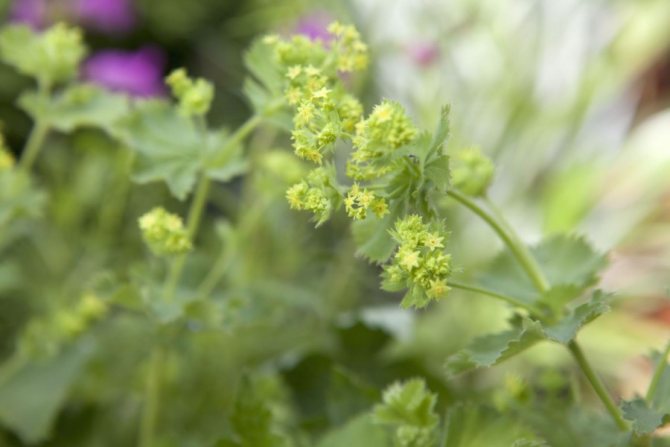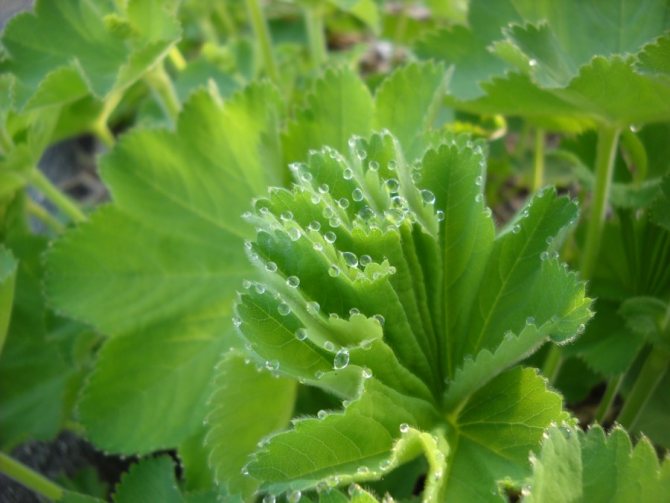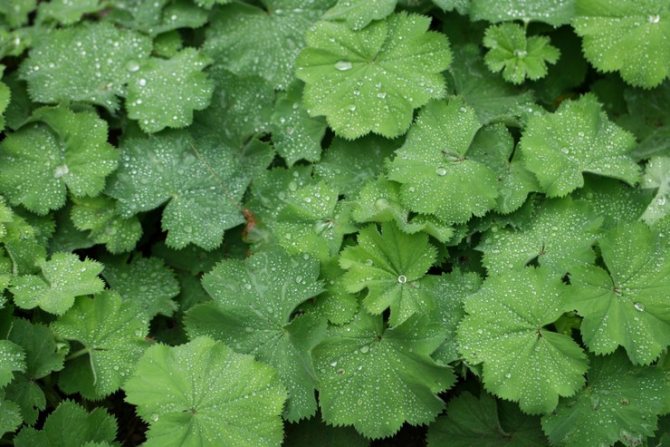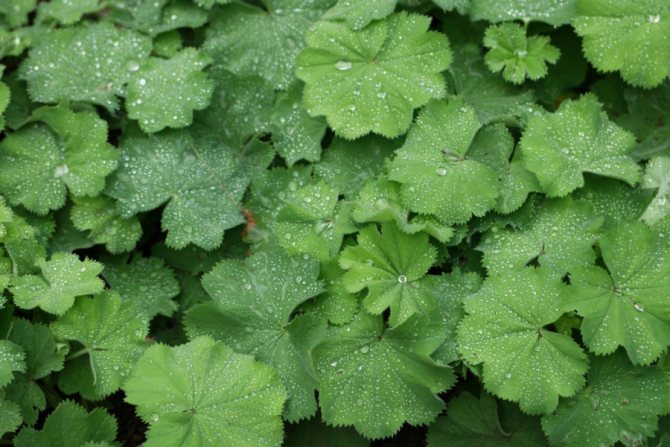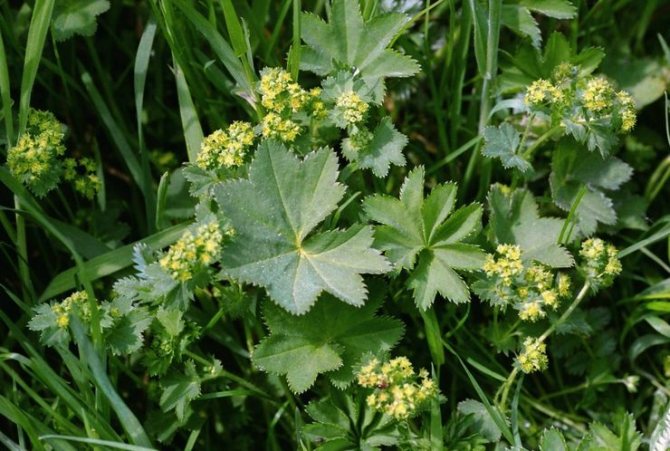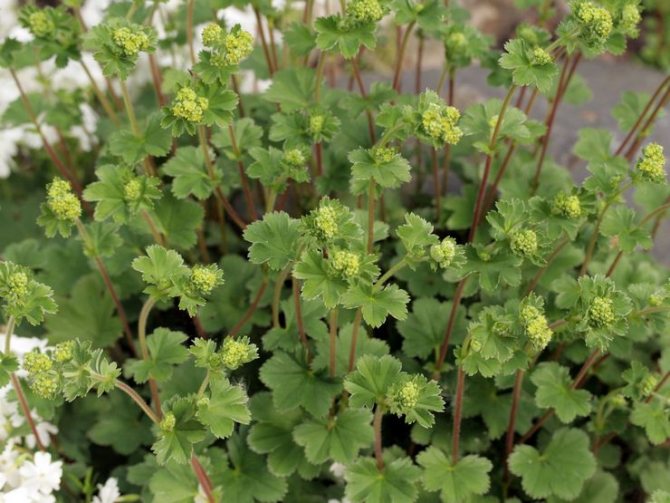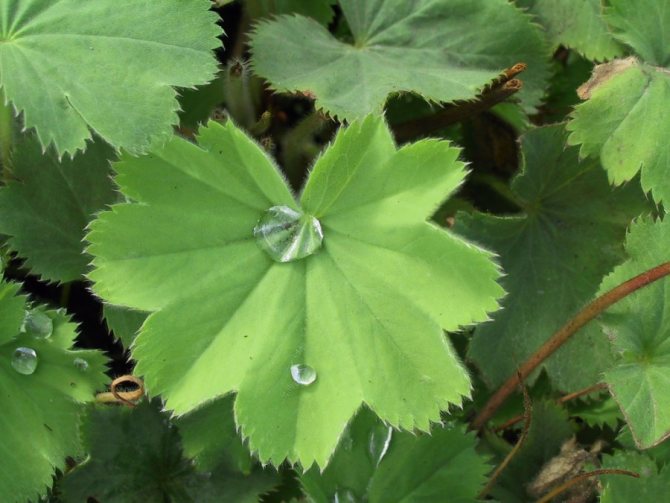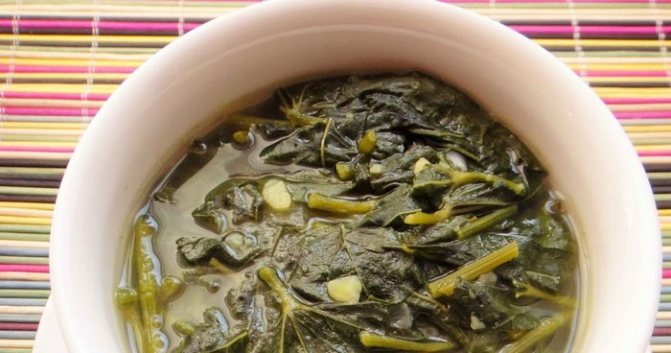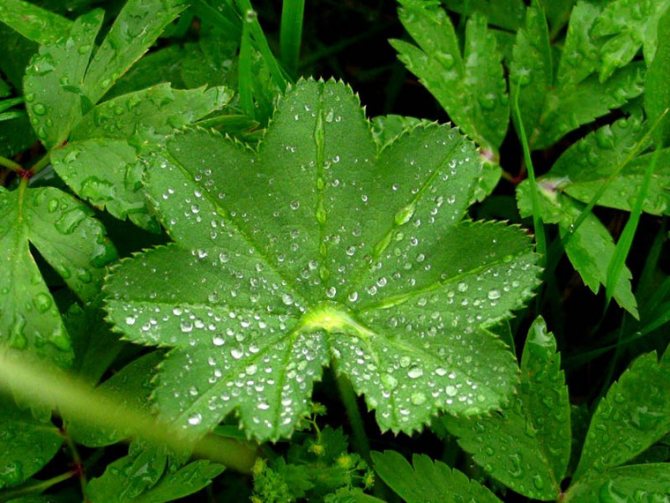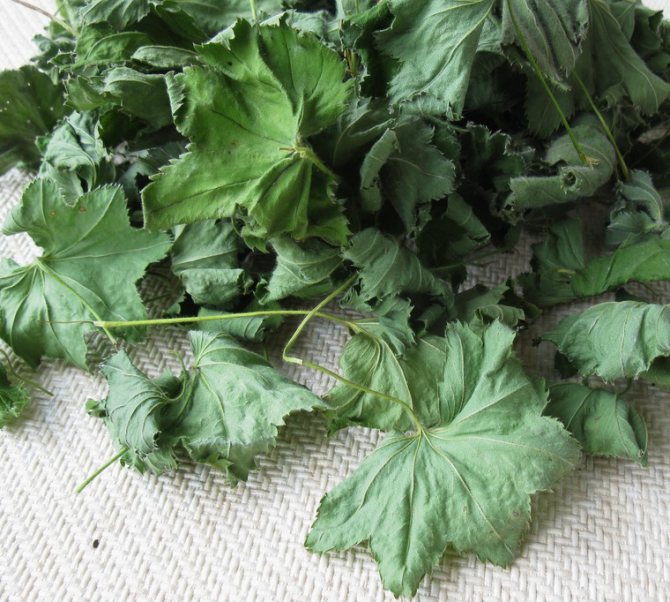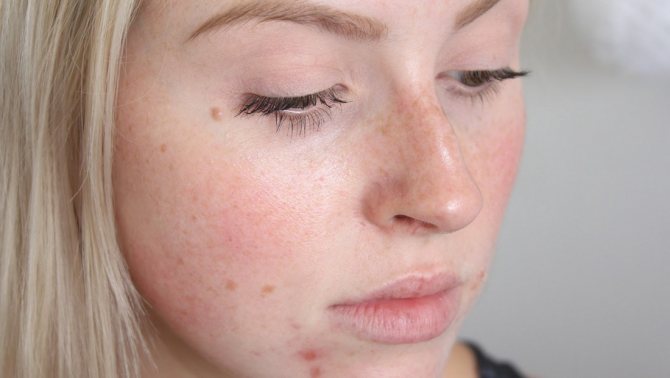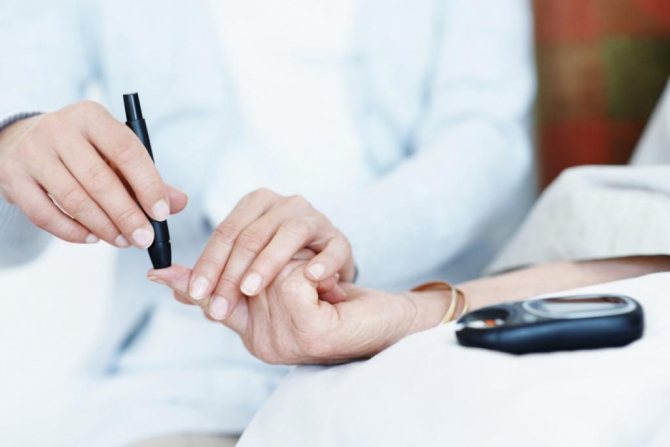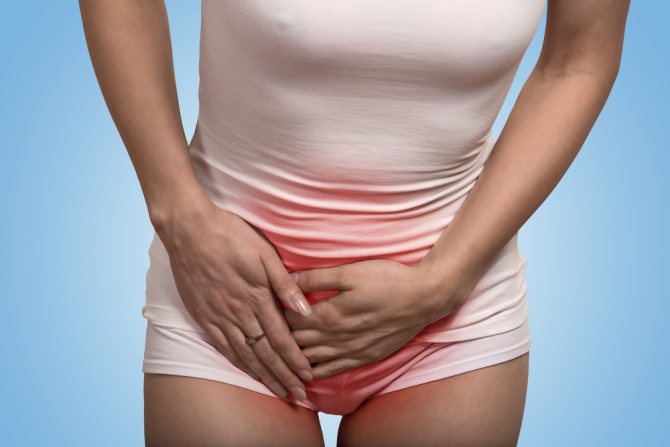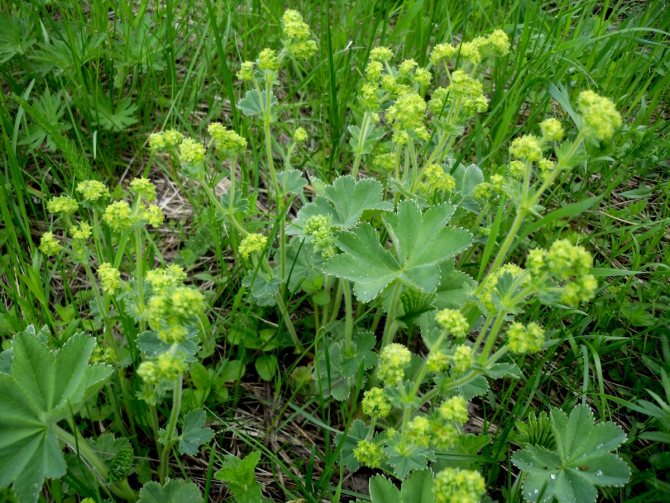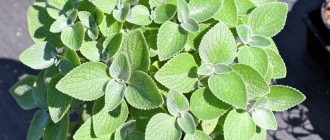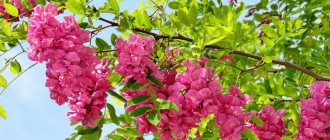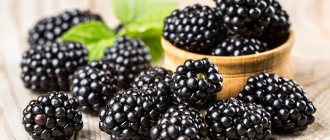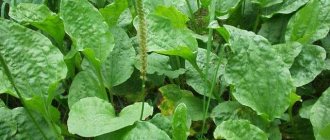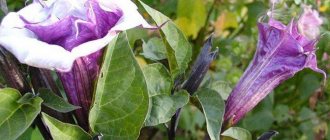The common cuff is not only an ornamental, but also a valuable medicinal plant, which is actively used in folk medicine. This culture has many popular names: breast, breast grass, heart gourd, etc., which reflect its healing properties.
In today's article, we will consider the botanical features of the cuff, its chemical composition and distribution sites, as well as provide recommendations for the collection, procurement and use of medicinal raw materials.
Types and varieties of plants, appearance
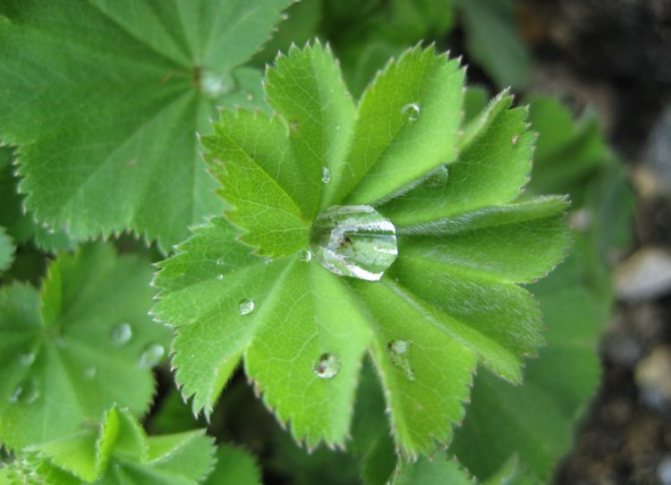
First, let's look at what types of cuffs are, and what are their features.
- Siberian. Most often it prefers to grow in the harsh climate that prevails in northern latitudes. The plant has strong and massive roots and can grow up to 30 centimeters in height.
- The cuff is soft. A distinctive feature of this species is its large yellow-green leaves and small flowers. The flower can be of different colors, but most often they are yellow.
- Ordinary. The common cuff, the photo of which you see, has folded foliage and blooms with small and dull flowers.
- Krasnochereshkovaya. The grass cuff of this species has bright blooming red flowers. But its height is no more than 15 centimeters.
- Alpine miniature. It is a shrub that grows no more than 20 centimeters in height. May be yellow or pale red.
Cuff in landscape design
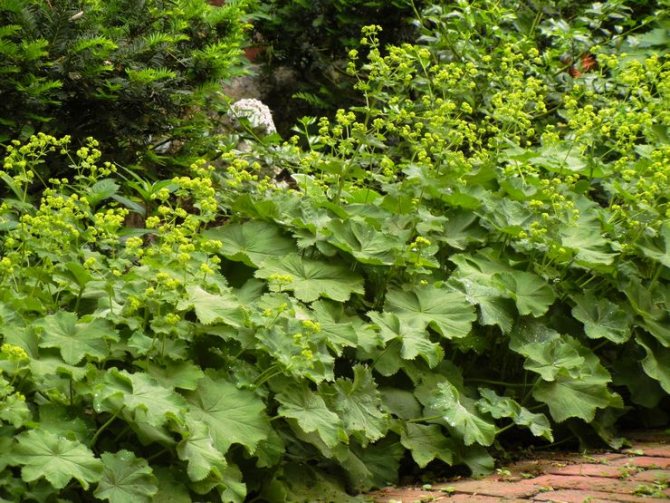

Due to the attractive openwork foliage, the cuff is in demand among gardeners when creating landscape compositions. The grass covers the site like a green lush carpet and covers the empty plots. Planting of cultural types of cuffs is organized on the slopes, near rocky embankments or along paths. Cuff varieties, which are short in length, outline the boundaries of the flower beds. Spectacular rich color of leaves will be an excellent backdrop for many flowering crops. Refined yellowish-green brushes attract with naturalness and simplicity. Daylilies, thyme, and astilbe happily coexist next to the cuff.
Where and how it grows
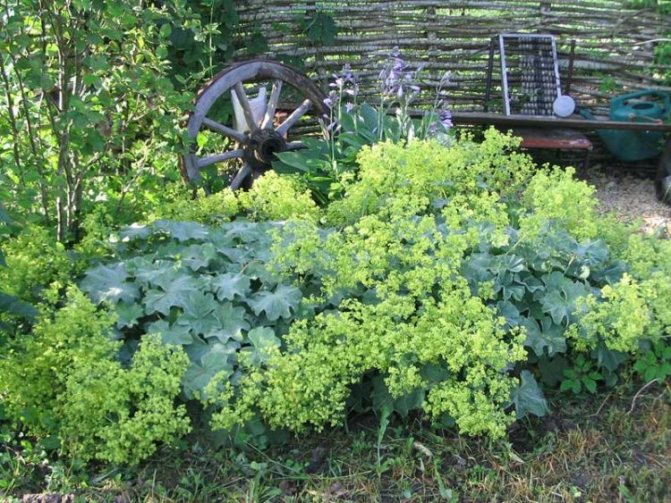

The plant forms a lot of small seeds, so it grows well in the wild. The most active flowering is observed in July-August. The plant propagates by self-sowing and through the root system.
The cuff is widespread. It can be found in all CIS countries. Most often, it grows in thin forests, on the banks of rivers and meadows. It is also often grown in plots as decorative ornaments and further use in folk medicine.
Application
In cooking
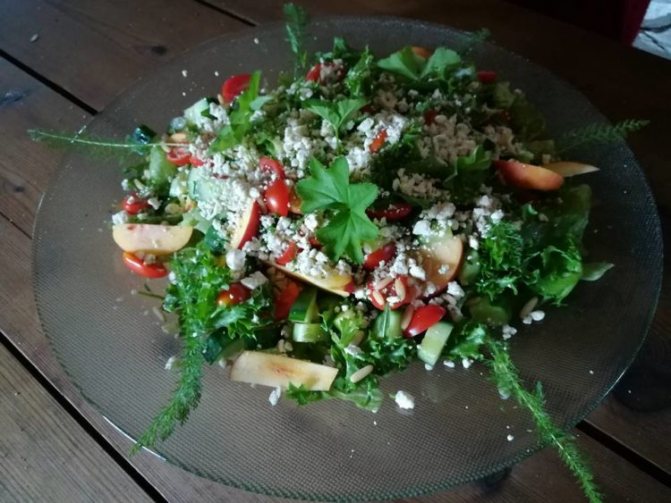

Cuff leaves are often used in cooking. And all due to the fact that they contain a significant amount of ascorbic acid. They are added to the preparation of soups, salads and used instead of cabbage. In this case, it is best to use young leaves that have not yet unfolded. And it is desirable that this plant grows in the shade, and not in the sun, the taste will depend on this. Older plants can add a bitter flavor to food.
In medicine
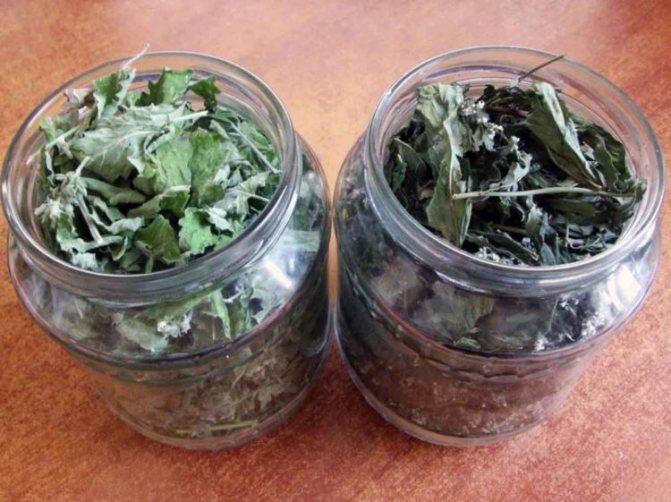

Quite often, the cuff is used for gynecological purposes. Thanks to this plant, it is possible to improve the menstrual cycle, cure infertility and even preserve pregnancy in some cases.But it is important to understand that it is possible to use the cuff for such purposes only under the supervision of the attending physician.
Also, teas from this plant can help reduce the manifestations of type 2 diabetes. Tinctures can improve the functioning of the intestines and pancreas, normalize sugar levels.
If you take the plant without having health problems, then you can saturate the body with minerals, vitamins and other useful substances.
When losing weight
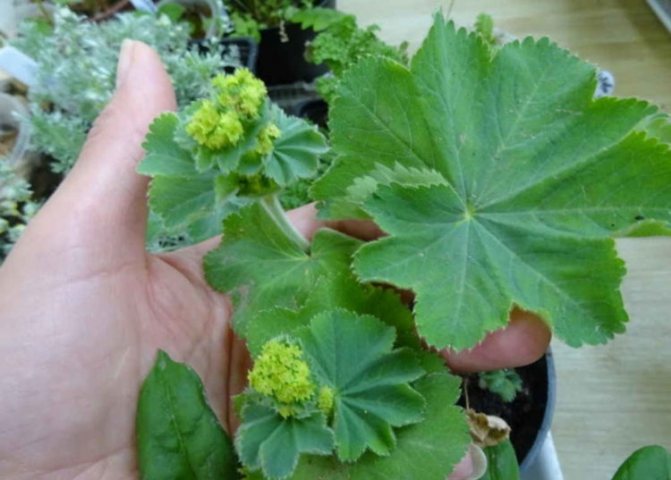

Also, the cuff is actively used for weight loss. Due to the fact that the plant contains a large amount of flavonoids, it can perfectly smooth the skin. Therefore, an anti-cellulite agent is made from the cuff.
This will require 25 grams of dry plant mixed with 15 grams of dried parsley. Pour boiling water over all this and leave for 1.5 hours. Then the mixture is filtered and used twice a day, in the morning and in the evening, 15 grams each.
At home
In early spring, various soups and salads are made from the shoots and leaves of the cuff. And also the plant is harvested for the winter and used for cooking in the future.
In cosmetology
If you want to get rid of cellulite externally, then pour 30 grams of dry grass with 300 grams of boiling water and let it brew for 1 hour. Then moisten gauze in the infusion and apply to problem areas.
Physical exercises
Exercise is extremely beneficial for a sedentary lifestyle. Sitting in an office for 8 hours, even in a comfortable chair, disrupts the blood supply in the small pelvis, which leads to stagnant processes. Specially selected sets of exercises accelerate the blood and improve the blood supply to tissues and organs. It should be borne in mind that playing sports will not have a positive effect on bacterial prostatitis.
As a charge against the problem under consideration, a set of special exercises has been developed:
- Squats - 100 times a day. They need to be deep. If the physical form does not allow you to do this number of repetitions, you can divide it into several approaches. The next day, out of habit, the muscles of the legs may hurt. At first, it is enough to do squats every other day, and over time, when the muscles get stronger, the load should be increased.
- "Scissors" while sitting on the floor - 20 times. The same exercise in the prone position - also 20 times.
- "Kalachik" - lying on your back, you need to pull your knees as tight as possible to your chest and grab them with your hands. Stay in this state for 20 minutes. At the same time, it is permissible to sway, which has a good effect on posture and spine.
- Self-massage of the perineum can also be attributed to physical effects on the pelvic organs. Regular massaging helps to get rid of stagnant processes and improve blood circulation.
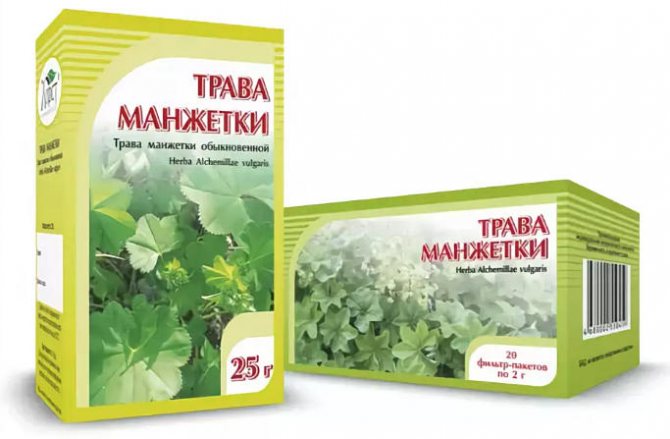

Such a set of exercises can not only help in eliminating prostatitis, but is also a good method for preventing its development.
Harm and contraindications
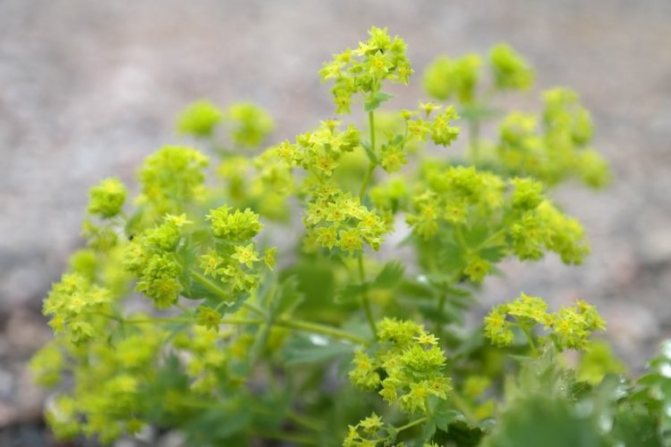

At the moment, such a plant as the cuff has long been studied up and down. And despite this, experts practically did not reveal the negative effects of the cuff on the human body.
The most serious contraindications that have been found are pregnancy, lactation, and under 3 years of age.
Also, prolonged and careless use and use can lead to indigestion, diarrhea and nausea. Refuse to use is necessary for people who have increased blood clotting.
Nutritional value and chemical composition
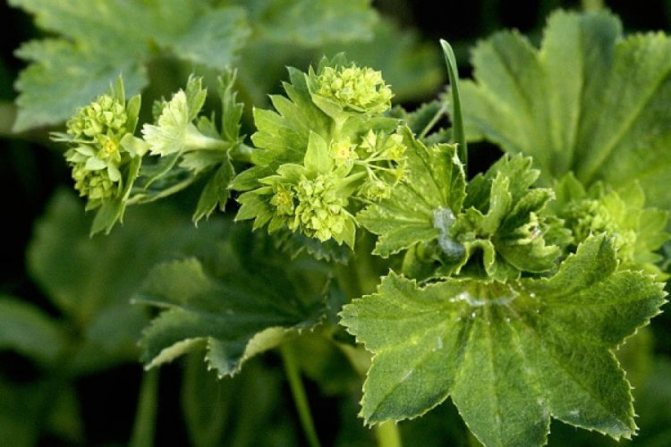

All the beneficial properties that this plant has are due exclusively to its rich composition. So, the composition includes:
- steroids;
- ascorbic acid;
- phenolcarboxylic acid;
- lignin;
- tannins;
- flavonoids;
- fatty acid;
- trace elements (potassium, manganese, magnesium, copper, boron, zinc, molybdenum, nickel).
Benefits for the body
The medicinal properties of the plant are very wide. These include the following:
- Wound healing.
- Antiseptic.
- Diuretic.
- Choleretic.
- Vaso-strengthening.
- Anti-inflammatory.
Many experts claim that plant-based medicines provide excellent prevention and treatment of cancer.


- The cuff can have a very positive effect in diseases of the digestive system and the gastrointestinal tract as a whole.
- The beneficial properties of the green doctor are pronounced in the fight against excess weight and obesity.
- The cuff heals most colds. Medicines based on it are widely used for bronchitis, asthma, runny nose, purulent sore throat.
- The plant copes well with wound healing, helps with the appearance of boils, purulent wounds, ulcers and eczema.
Migraines, depression, sleep disorders, and other nervous system disorders can also be treated with a cuff.
Important! In addition to useful properties, there are also contraindications. It is recommended that you consult with a specialist before using medications.
How to grow, care and pests and diseases
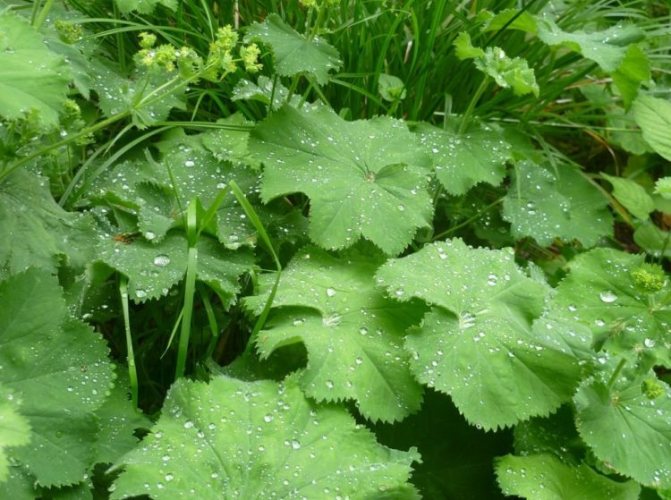

Planting and growing the cuff does not require much effort, since the plant is not at all capricious. Its peculiarity is that it grows calmly, both in the shade and in the sun. The cuff is planted in fertile, loose soil and sometimes fertilized immediately. To do this, you can take soil with humus and add it when planting. Also, the shrub grows well in the ground, where there is a small amount of clay.
If the plant is under constant influence of direct sunlight, then it must be watered regularly to avoid drying out.
The best place to grow a cuff is in an area that has both sun and shade. If the plant is almost always in the shade, then its watering can be limited to a minimum. It is also an advantage that the plant tolerates frost well. But even its root system is best wrapped in straw during winter frosts.
It is recommended to fertilize the cuff several times per season:
- immediately after planting seedlings, they are fed with complex mineral fertilizers;
- in April, humus is introduced into the soil.
Procurement and storage
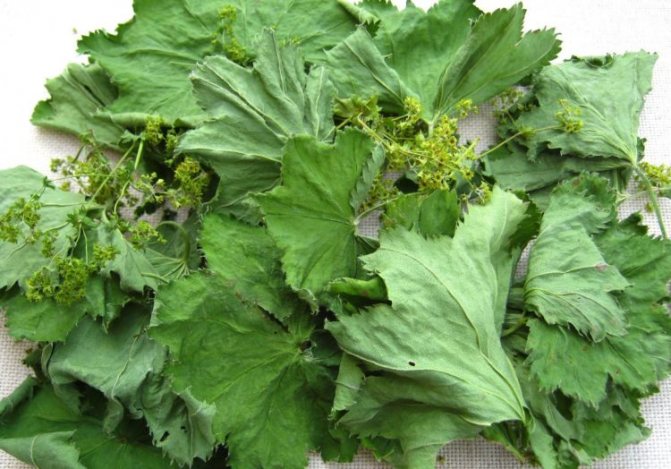

This plant is harvested, regardless of its variety, during the flowering period. But the flowering at the cuff lasts quite a long time, or rather, 4 months. That is, you can collect the cuff all summer and all September, but provided that there was no rain, and the plant has already dried out from dew. You only need to cut off the ground part of the plant and be sure to thoroughly dry the collected.
The dried herb should be placed in a bag or glass container with a lid and stored in a dry place at room temperature. The shelf life of such a herb should not exceed 1 year.
Treatment of men
For men, the cuff is a good remedy for impotence. It eliminates inflammation and infectious lesions of the genitourinary system, restores reproductive function, treats prostatitis and urethritis. Cuff therapies regulate cholesterol levels and strengthen blood vessels, which is very important for men, as they are more susceptible to cardiovascular disease.
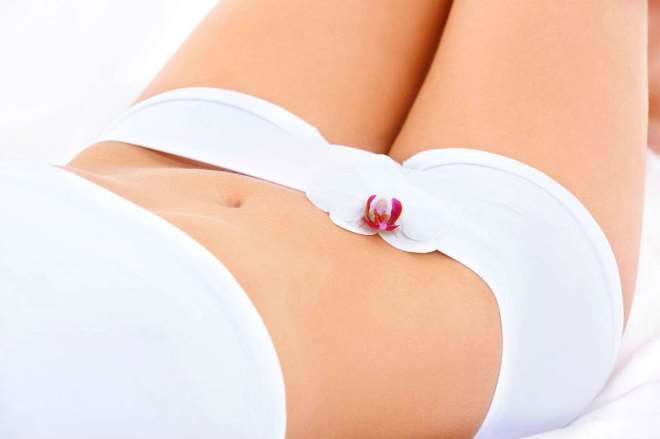

the herb has a beneficial effect on maintaining women's health and beauty


